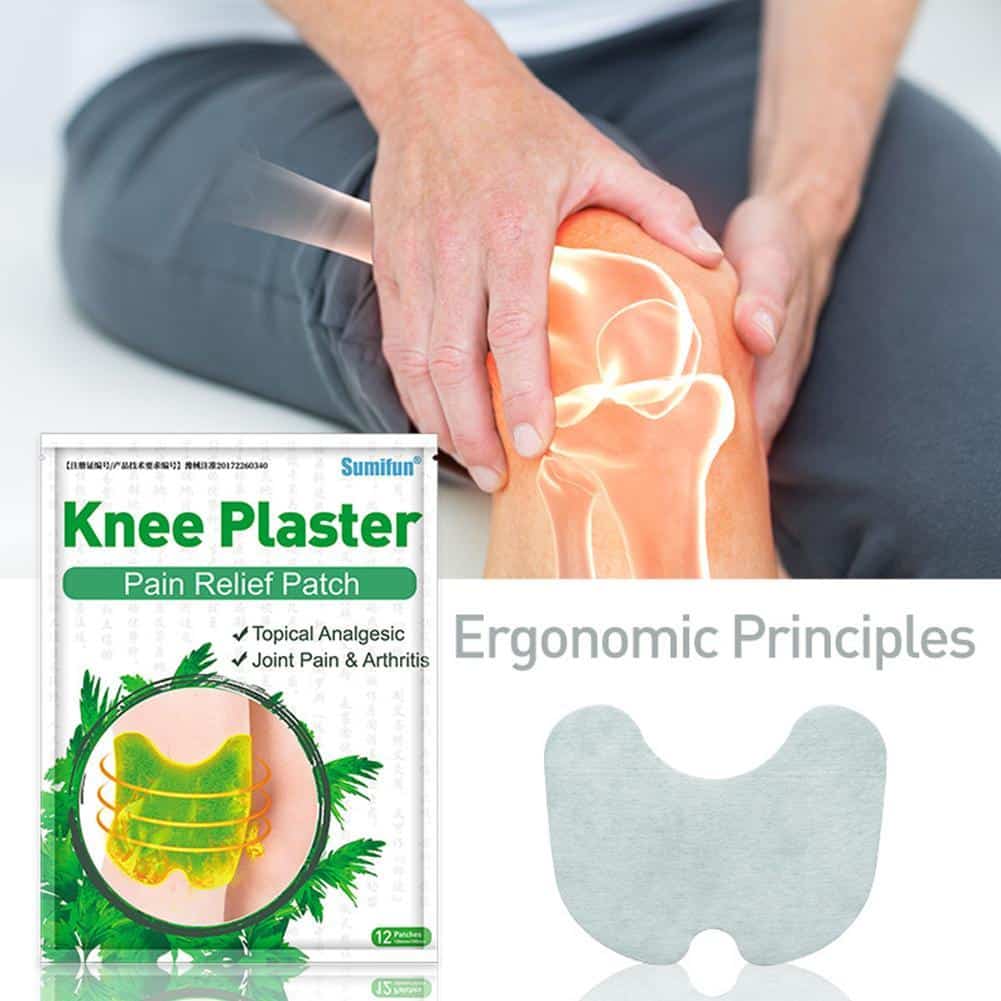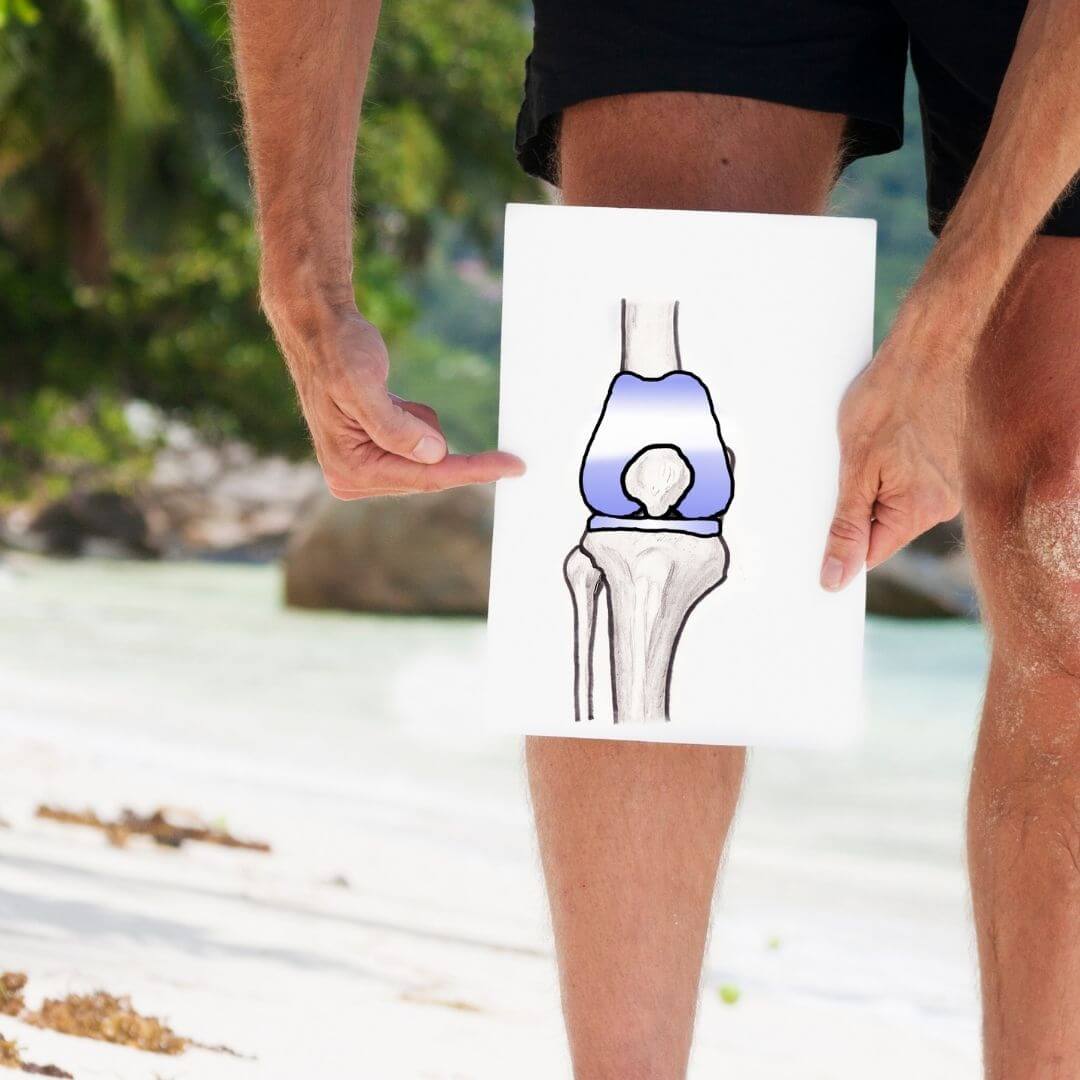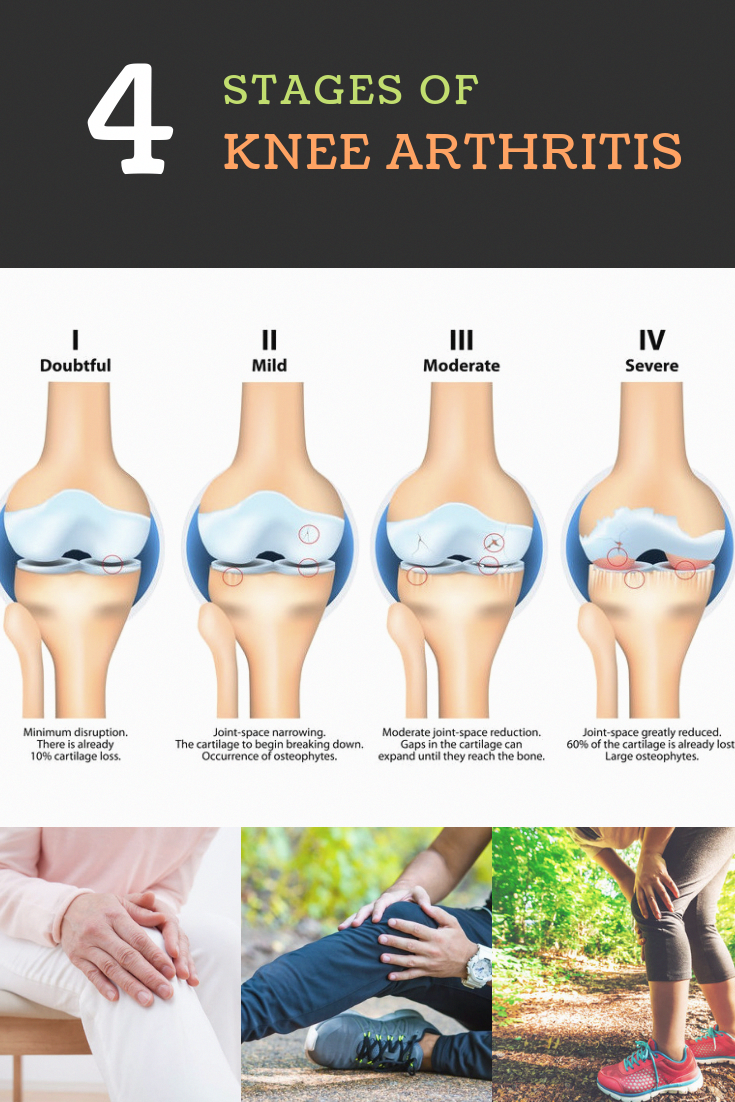Learn About The Surgery
The decision to have surgery is a major one. It is not a decision to be made quickly or without good reasons. Before you decide to have surgery, be sure to learn what operation is being suggested, what are the alternatives, what are the risks and what is involved in the recovery process. Don’t be shy about asking lots of questions of your surgeon, including information on his or her success record with the particular procedure. As you consider whether or not to have surgery, keep in mind that every person’s needs are different. Your doctor may inform you that surgery won’t give you the results you want. If your doctor thinks that surgery can help you, there are still many things you need to know.
Meniscus Tears Of The Knee
The meniscus can be torn with the shearing forces of rotation that are applied to the knee during sharp, rapid motions. This is especially common in sports requiring reaction body movements. There is a higher incidence with aging and degeneration of the underlying cartilage. More than one tear can be present in an individual meniscus. The patient with a meniscal tear may have a rapid onset of a popping sensation with a certain activity or movement of the knee. Occasionally, it is associated with swelling and warmth in the knee. It is often associated with locking or and unstable sensation in the knee joint. The doctor can perform certain maneuvers while examining the knee which might provide further clues to the presence of a meniscal tear.
Routine X-rays, while they do not reveal a meniscal tear, can be used to exclude other problems of the knee joint. The meniscal tear can be diagnosed in one of three ways: arthroscopy , arthrography, or an MRI. Arthroscopy is a surgical technique by which a small diameter video camera is inserted through tiny incisions on the sides of the knee for the purposes of examining and repairing internal knee joint problems. Tiny instruments can be used during arthroscopy to repair the torn meniscus.
Getting Back To Normal
It will be some weeks before you recover from your operation and start to feel the benefits of your new knee joint. Make sure you have no major commitments including long-haul air travel for the first six weeks after the operation.
Keeping up your exercises will make a big difference to your recovery time. Youll probably need painkillers as the exercise can be painful at first. Gradually youll be able to build up the exercises to strengthen your muscles so that you can move more easily.
Don’t Miss: How Would You Know If You Have Arthritis
Understanding Why Some Joint Replacements Fail
We’re also supporting research to improve the outcome of knee replacement surgeries, such as a project aimed at increasing the understanding of why joint replacements sometimes fail by investigating whether there are genetic risk factors that influence surgery outcome. This research has the potential to improve patient experience and increase the life of the joint replacement.
Does Knee Replacement Get Rid Of Arthritis

Knee replacement is an excellent way to reduce pain in the knees and can solve a number of issues, and is often ideal for people who have tried alternative pain-relief methods to no avail. However, it is not a permanent solution for arthritis. Knee surgery may temporarily relieve pain from arthritis, but it does not cure the condition. Managing your arthritis will still be necessary to reduce pain in the knees, even after joint surgery.
Also Check: Does Rheumatoid Arthritis Show On X Ray
How To Treat Knee Inflammation
This article was co-authored by Jonathan Frank, MD. Dr. Jonathan Frank is an Orthopedic Surgeon based in Beverly Hills, California, specializing in sports medicine and joint preservation. Dr. Frankâs practice focuses on minimally invasive, arthroscopic surgery of the knee, shoulder, hip, and elbow. Dr. Frank holds an MD from the University of California, Los Angeles School of Medicine. He completed an orthopedic residency at Rush University Medical Center in Chicago and a fellowship in Orthopedic Sports Medicine and Hip Preservation at the Steadman Clinic in Vail, Colorado. He is a staff team physician for the US Ski and Snowboard Team. Dr. Frank is currently a scientific reviewer for top peer-reviewed scientific journals, and his research has been presented at regional, national, and international orthopedic conferences, winning several awards including the prestigious Mark Coventry and William A Grana awards.There are 10 references cited in this article, which can be found at the bottom of the page. This article has been viewed 84,478 times.
Also Check: Why Does My Knee Hurt When Itâs Cold
More You Need To Know About Knee Meniscus Surgery
Despite the fact that orthopedic surgeons keep performing meniscus surgery and insurance keeps covering it, there are an abundance of problems plaguing the procedure, and its likely well see this surgery relegated to the medical history books in the not-too-distant future. Lets take a look at just a few of the issues Ive covered over the last decade or so:
Also Check: What Is The Best Thing To Take For Rheumatoid Arthritis
Looking For Alternatives To Total Knee Replacements
We’re also funding research which is investigating alternative approaches to total knee replacement. For example, total knee replacement is not recommended for many young people. This study aims to develop a new method called ToKa®, which uses images of the patient’s joint and specially designed software to design a patient specific implant that will be made via 3D printing. If successful, this technique could prevent osteoarthritis patients from needing total joint replacement.
Things You Can Do To Treat Knee Arthritis Without Surgery
There are many effective options for relieving the pain of arthritis of the knee and improving joint function before resorting to surgery. Here are the 5 most effective ones:
Don’t Miss: How To Decrease Arthritis Inflammation
Can Walking Alot Cause Knee Pain
Problems with your feetinclude hypermobile feet, where the joints in and around them move more than they should, fallen arches, and overpronation, which means your foot rolls down and inward when you step. These can affect your balance by changing the way you walk. If you have any of these problems, its important to see a doctor as soon as possible.
Dont Miss: How Do I Get Rid Of Arthritis Pain
Activities You Cannot Do After Full Recovery
You shouldn’t downhill ski or play contact sports such as football and soccer. In general, avoid sports that require jerking, twisting, pulling, or running. You should be able to do lower-impact activities, such as hiking, gardening, swimming, playing tennis, and golfing.
Other directions you will always need to follow include:
- Take small steps when you are turning. Try not to pivot on the leg that was operated on. Your toes should be pointing straight ahead.
- Do not jerk the leg that was operated on.
- Do not lift too much weight. This will place too much stress on your new knee. This includes grocery bags, laundry, garbage bags, tool boxes, and large pets.
Don’t Miss: Are Beans Good For Arthritis
Lie On Your Stomach To Relax Tight Hip Flexors
People with hip pain typically try not to stand much, since it can be an uncomfortable position. But sitting shortens the hip flexor muscles, which can actually increase pain, says Genie Lieberman, the director of the Gloria Drummond Physical Rehabilitation Institute at the Boca Raton Regional Hospital in Florida.
To promote the full extension of the hips, Lieberman recommends lying face down for up to 30 minutes, with small pillows placed under your shoulders for comfort. You can do this on your bed turn your head to either side and rest it on your forearms for comfort. In the beginning, it may be too painful to stay this way for more than a few seconds, but as you stretch the muscles it will get easier.
Looking After Your Knee Replacement

Your new knee will continue to improve for as much as two years after your operation as the scar tissue heals and you exercise your muscles. You’ll need to look after yourself and pay attention to any of the following problems:
Stiffness Sometimes the knee can become very stiff in the weeks after the operation for no obvious reason. Try placing your foot on the first or second step of the stairs, hold on to the banister and lean into your knee. This should help to improve movement and flexibility in your knee. Its very important to continue with the exercises you were working on in the hospital.If the stiffness doesnt improve after about six weeks your surgeon may need to move or manipulate your knee. This will be done under anaesthetic.
Pain Pain caused by bruising from the operation is normal in the first two months, and you’ll probably still need to take painkillers at six weeks to help you sleep through the night. You may still have some pain for as long as six months. If you still have pain after this, speak to your physiotherapist or GP.
Infection You should speak to your GP or hospital if you notice any signs of infection, for example:
- breakdown of the wound with oozing/pus or sores
- redness and the affected area feeling warmer than usual or smelling unpleasant.
You should also look after your feet see a doctor or podiatrist if you notice any problems such as ingrown toenails that could become infected.
Read Also: What Food Is Good For Psoriatic Arthritis
When To See A Doctor
An obvious knee injury caused by sudden trauma, such as from a road accident or a fall, may need immediate medical attention.
A knee should be checked by a doctor if there is considerable pain, deep cuts, swelling, or the person is unable to use their leg.
For other cases of knee pain, a doctor will need to examine the problem if it:
- persists for a long time
- gets progressively worse
- disrupts daily activities
It is important to get a diagnosis and treatment from a doctor if knee pain involves red, tender, warm, and swollen joints.
If the symptoms are persistent, involve other joints, and there are other symptoms such as morning stiffness, it could be rheumatoid arthritis. Doctors can give drugs for both the disease itself and the pain it causes.
If a swollen knee is very hot and painful, and if there are other general symptoms of feeling unwell, this is a time to get urgent medical help. The knee could be infected, and serious infection can be dangerous. This needs urgent hospital treatment.
Anyone whose knee pain is receiving medical help should see contact their doctor again if problems get worse or if there are issues with treatment, such as a drug side effect.
You May Like: Does Sugar Cause Arthritis Flare Up
Joint Reconstruction For Arthritis In Clinton Township Mi
Joint reconstruction is an option for some with arthritis. It also facilitates other procedures like cartilage regeneration. Through direct mechanical repair, joint reconstruction is useful for cases where conservative treatments failed to work. Ultimately, reshaping joint components can offer greater range of motion and less discomfort for many patients.
Learn more about joint reconstruction and preservation at Movement Orthopedics. Our medical team utilizes cutting-edge orthopedic and sports medicine treatments in our facility in Clinton Township. We handle a wide range of orthopedic conditions, with treatment plans customized for your specific needs. For inquiries, contact us at 436-3785 or use our online appointment request form.
You May Like: How Do I Know If I Have Knee Arthritis
How Can I Ease Arthritis Pain
If you are looking for ways to reduce arthritis pain or maintain your knee surgery results, there are a number of things you can do to help alleviate pain. While there is no true cure for arthritis, there are many things you can do to help reduce arthritis pain. Some of those things include:
- Maintain a healthy weight
What Is Osteoarthritis
Knee osteoarthritis is caused by damage to or the wearing down of articular cartilage. This is the material which covers the surfaces of the bones in the knee joint. Without the articular cartilage, bone grinds on bone.
Knee osteoarthritis can affect any or all of the three main parts of the knee:
- The medial compartment
- The patello-femoral joint knee cap
The medial compartment is the commonest site for knee arthritis affecting a single compartment.
You may find knee osteoarthritis arises as the result of a cartilage injury , but it can also occur without any history of injury or damage to the knee.
Don’t Miss: How To Tell If You Have Arthritis In Your Feet
Surgery Is One Option
The loss of hand function is a serious matter, especially when the hands are also painful. When other therapy has not helped enough to allow you to do necessary tasks, such as holding a fork or zipping clothing, surgery may be the answer. In addition, some people with arthritis are concerned about deformity in their hands. While surgery may improve the look of the hands, remember that the main purposes of surgery are to decrease severe pain and to restore function.
Are There Any Complications
Osteoarthritis can develop over just a year or two, but more often its a slow process over many years that only causes fairly small changes in just part of the knee.
But in some cases, the cartilage can become so thin that it no longer covers the ends of the bones. This causes them to rub against each other and eventually wear away.
The loss of cartilage, the wearing of the bones, and the bony spurs can change the shape of the joint. This forces the bones out of their normal positions, making your knee feel unstable and painful.
Some people with osteoarthritis find a lump appears at the back of their knee. This is called a Bakers cyst or popliteal cyst.
A Bakers cyst is fluid-filled swelling at the back of the knee that happens when part of the joint lining bulges through a small tear in the joint capsule. This can then cause joint fluid to be trapped in the bulge.
It can happen on its own, but is more likely in a knee thats already affected by arthritis. A Bakers cyst doesnt always cause pain, but sometimes they can burst so the fluid leaks down into your calf, causing sharp pain, swelling and redness in the calf.
Osteoarthritis in the knee might change the way you walk or carry your weight, and this could cause you to develop the condition in other joints, such as your hips.
Don’t Miss: How Many Types Of Arthritis Exist
What Are The Signs And Symptoms Of Arthritis Of The Knee
There are many signs and symptoms of arthritis of the knee:
- Creaking, clicking, grinding or snapping noises .
- Difficulty walking.
- Joint pain that changes depending on the weather.
- Joint stiffness.
- Knee joint pain that progresses slowly or pain that happens suddenly.
- Your knee locks or sticks when its trying to move.
Pain and swelling are the most common symptoms of arthritis of the knee. Some treatments might reduce the severity of your symptoms or even stall the progression. See your healthcare provider if you have symptoms of knee arthritis.
Important Considerations For People With Arthritis Of The Hip

There is no cure for arthritis. Typically, it starts gradually and worsens over time. Eventually, all forms of arthritis of the hip may permanently damage the hip joint. While osteoarthritis is more common in older people, there are forms of arthritis that affect younger people.
Fortunately, there are things that can be done to help minimize the effect of arthritis, and we are glad to discuss these option.
Arthritis Statistics*:
- 22% of the U.S. population in 2010 reported some form of arthritis
- Among adults over 65, 50% have some form of arthritis
- The most common form of arthritis is osteoarthritis
- Weight loss of just 11 pounds can reduce a womans risk of developing knee arthritis by 50%
- Of working age people , one-third of those who had arthritis reported it limited their ability to work
*Centers for Disease Control and Prevention
Recommended Reading: What Can Be Done For Arthritis In The Shoulder
Also Check: How To Relieve Arthritis In Hand
How To Cure Arthritis Naturally With Home Remedies
How to get rid of Arthritis : Arthritis is a health condition that causes pain and stiffness in body joints. Approximately, 20% of people suffer from chronic joint pain and most of them dont know the causes. Taking painkillers for joint pain relief is very common but that is not a permanent cure.
First, a person who is suffering from arthritis needs to understand its causes and type. Aging is one of the causes of joint pain but not the only one. It can happen to a person at any age. There are so many treatments for joint pain but it can be cured at home with the help of exercise and natural remedies.
What is arthritis?
In fact, the word arthritis stands for joint inflammation, the term is used to describe around 200 rheumatic diseases and conditions that affect joints. Its a serious problem because it can affect badly a persons ability to perform everyday tasks. According to the US Centers for Disease Control and Prevention , 50 million people are diagnosed with arthritis by their doctor.
Contents